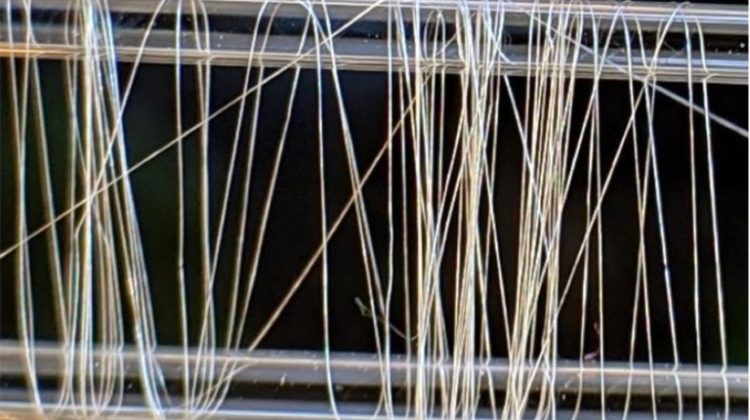
It’s often said that spider silk is one of the strongest materials on Earth, but now a team of engineers from Washington University in St Louis has designed and produced hybrid proteins that are stronger than some natural spider silks.
Working in the lab of Fuzhong Zhang, a professor in the Department of Energy, Environmental and Chemical Engineering in the McKelvey School of Engineering, the team used genetically engineered bacteria to produce the so-called ‘polymeric amyloid’ fibre.
The research was the continuation of work previously carried out in Zhang’s lab that led to the production of a recombinant spider silk that performed on par with its natural counterparts in all of the important mechanical properties. ‘After our previous work, I wondered if we could create something better than spider silk using our synthetic biology platform,’ Zhang said.
By modifying the amino acid sequence of spider silk proteins, the team was able to introduce new properties while retaining some of the silk’s other useful features.
One of the most significant difficulties faced when attempting to create artificial spider silk is the need to create β-nanocrystals, which contribute to its strength. ‘Spiders have figured out how to spin fibres with a desirable amount of nanocrystals,’ Zhang said. ‘But when humans use artificial spinning processes, the amount of nanocrystals in a synthetic silk fibre is often lower than its natural counterpart.’
The team solved the problem by redesigning the silk’s genetic sequence, introducing amyloid sequences that have a high tendency to form β-nanocrystals to create a series of different polymeric amyloid proteins using three well-studied amyloid sequences as representatives.The resulting proteins had fewer repetitive amino acid sequences than natural spider silk, making them easier to produce using engineered bacteria.
The resulting fibre exhibited gigapascal strength (a measure of how much force is needed to break a fibre of fixed diameter), which is stronger than common steel. Its toughness (a measure of how much energy is needed to break a fibre) was higher than Kevlar and all previous recombinant silk fibres. Both strength and toughness were also higher than values reported for some natural spider silk fibres.
Having explored only three of thousands of different amyloid sequences that could potentially be used to produce silk with further enhanced properties, the researchers say that this work is only the beginning. ‘There seem to be unlimited possibilities in engineering high-performance materials using our platform,’ said Jingyao Li, a PhD student in Zhang’s lab. ‘It’s likely that you can use other sequences, put them into our design and also get a performance-enhanced fibre.’
‘This demonstrates that we can engineer biology to produce materials that beat the best material in nature,’ Zhang said.



